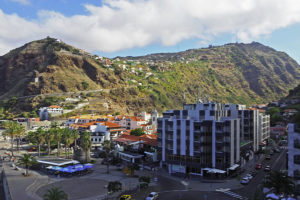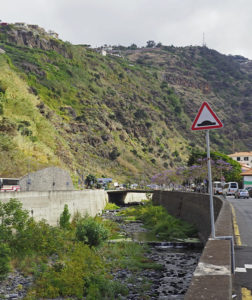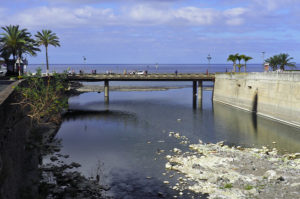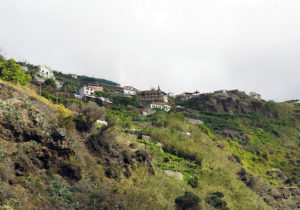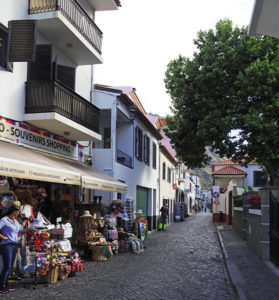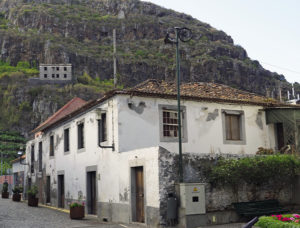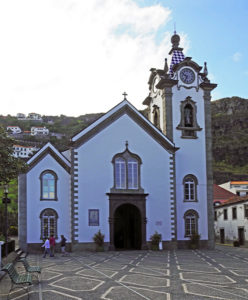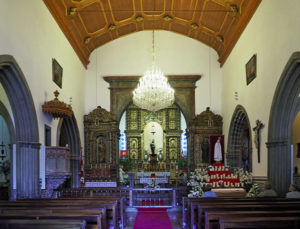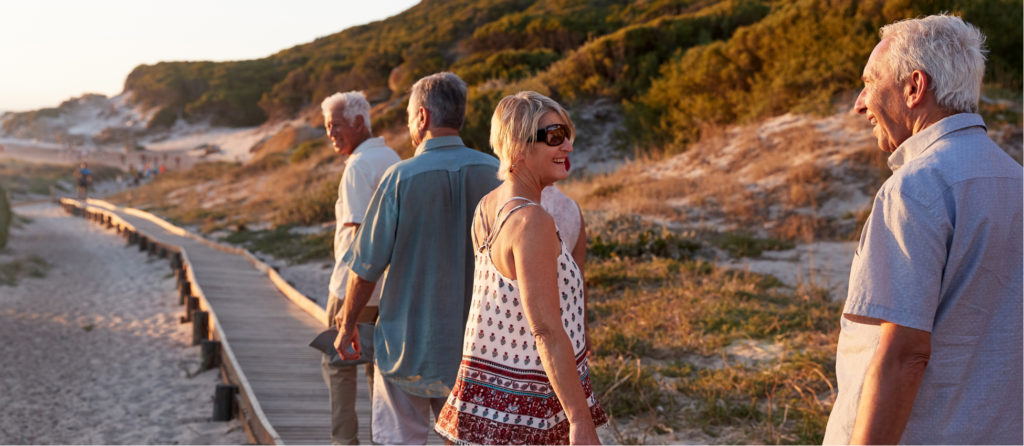On the south coast of Madeira and nearly 13 miles west of Funchal, Ribeira Brava is one of the oldest settlements on the island. It is located at the mouth of a very steep valley and, after rain, the river rushes down the valley carrying rocks and boulders with it, thus giving the settlement its name which translates as ‘Angry River’. The river is crossed by several bridges and in May, there was little water.
The best views of the town are from the small lighthouse built on the cliff at the end of the settlement. This was built in the 1920s to guide in fishermen. The small stone pier was built between 1904-8 and was used by vessels to drop off crates, barrels and other goods. It is now mainly used for boat trips.
The small round stone tower is the remains of the C18th Sao Bento Fort built to defend the harbour from corsair attack. It is now the tourist office.
The sea front is lined with cafes and restaurants. At the far end is the small market which has very attractive modern tile panels. (There are very nice free toilets are just beyond the market.)
There has been quite a bit of tall new build around the centre. Older streets are narrower and are still cobbled. There are many tourist shops.
The town hall is a bright pink building set in a small garden near the church. This was built in 1765 and was the home of a wealthy sugar merchant .
Igreja de Sao Bento is late C15th and considered to be one of the best preserved and oldest churches on the island. It is a typical Madeiran black and white church with a chequered roof tiles.
The inside of the church has an arcade of dark basalt pillars separating the nave from the side aisles. The bottom of the walls are lined with blue and white Azulejo tiles.The curved wood panelled ceiling has gilded bosses with magnificent crystal chandeliers. There are small altars on either side of the chancel arch and on the side walls.
The impressively gilded main altar dates from the end of the C17th. The chancel walls are lined with more blue and white tiles.
We had an hour in Ribeira Brave, which unfortunately didn’t include time to visit the “Ethnographic Museum”:https://cultura.madeira.gov.pt/en/madeira-ethnographic-museum in a C16th town house.
There are more pictures of Ribeira Brava “here.”:http://cultura.madeira-edu.pt/museus/Museums/MadeiraEthnographicMuseum/tabid/229/language/en-US/Default.aspx
